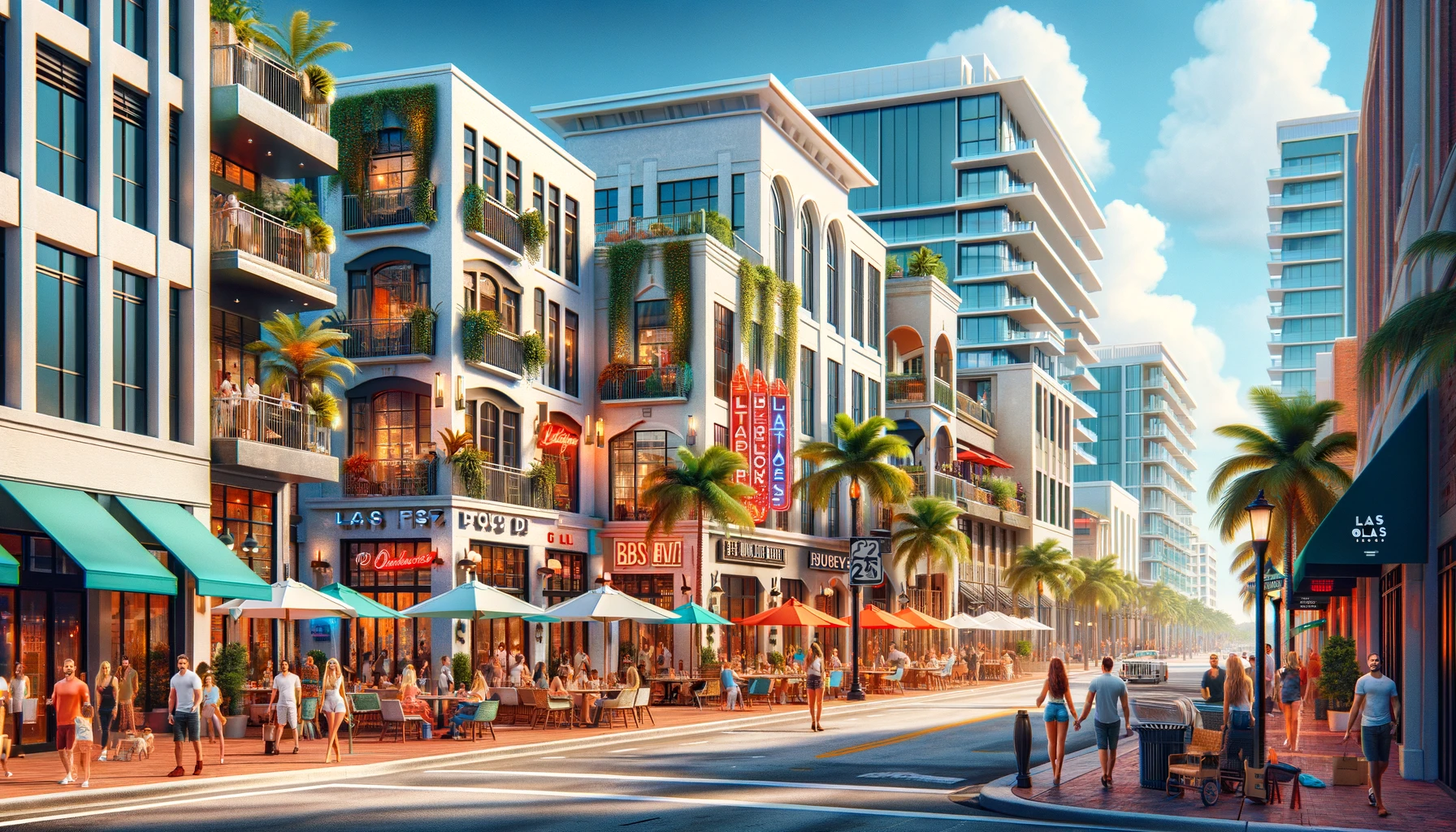What Is The History Of Las Olas?

Las Olas Boulevard, a vital artery in Fort Lauderdale, Florida, stretches from the core of the Central Business District at SW 1st Avenue to the sandy shores of Fort Lauderdale Beach along Florida State Road A1A. This historic boulevard, whose name translates to “The Waves” in Spanish, is not only a crucial part of the city’s transportation system but also a cultural and social hub. Initially bearing the designations of State Road A1A Alt. and State Road 842, Las Olas has transformed dramatically from its early days as a mere pathway.

The Early Development of Las Olas
The creation of Las Olas Boulevard dates back to 1917, crafted by S.P. Snyder & Son Co. Originally a dirt road that meandered through swampy wetlands to a barrier island, it served as a rudimentary link to what is now a bustling beachfront. The 1920s marked a significant phase of development, with the dredging of the Las Olas Isles to establish a waterfront residential district. This development set the stage for the neighborhood’s upscale transformation, laying the groundwork for what would become one of the most prestigious areas in Fort Lauderdale.
The Post-War Boom and Urban Development
Following the conclusion of World War II, Las Olas Boulevard began to witness substantial urban development. This era saw the construction of the commercial segment that today is synonymous with Las Olas. It became lined with a mix of low and mid-rise structures, hosting an array of bars, nightclubs, bridal stores, boutiques, art galleries, and restaurants that attract locals and tourists alike. As the boulevard extends west beyond SE 17th Avenue, it transitions into a bustling commercial district colloquially known as “Las Olas,” leading further into the city’s financial district characterized by modern high-rises.

The 1980s Revitalization Efforts
The early 1980s were pivotal for Las Olas as the boulevard underwent a major renovation to boost property values and enhance its appeal. This period introduced stringent regulations mandating that new homeowners demolish existing structures to make way for homes that would match or exceed the value of the highly prized land. This redevelopment not only preserved the area’s luxurious allure but also attracted new investments and residents seeking the prestigious Las Olas lifestyle.

The Modern Las Olas
Today, Las Olas Boulevard stands as a symbol of luxury and affluence in Fort Lauderdale. The completion of the $49 million Las Olas Oceanside Park project in 2020 at the intersection of Florida State Road A1A and Las Olas Boulevard has further cemented its status as a cultural hub. This new development features a 650-space parking garage and a beachfront park that hosts a plethora of community events such as farmers markets, fitness sessions, and art shows, enriching the vibrant life along the boulevard.

Tourist Attractions and Local Favorites
Professional tour companies capitalize on the scenic beauty and luxurious appeal of Las Olas by offering guided tours that showcase the extravagant homes and impressive yachts along its waterways. These tours provide insights into the lives of the rich and famous who reside along the boulevard, making it a popular attraction for tourists seeking a glimpse of high-end living.
Conclusion
Las Olas Boulevard has evolved from a primitive road into a thriving commercial and residential artery, embodying the growth and transformation of Fort Lauderdale. Its rich history and continuous development reflect the dynamic nature of the city itself, making it a lasting symbol of progress and prosperity. As Las Olas continues to develop and adapt to the needs of its community, it remains a central figure in the narrative of Fort Lauderdale, promising even more growth and innovation in the years to come.
